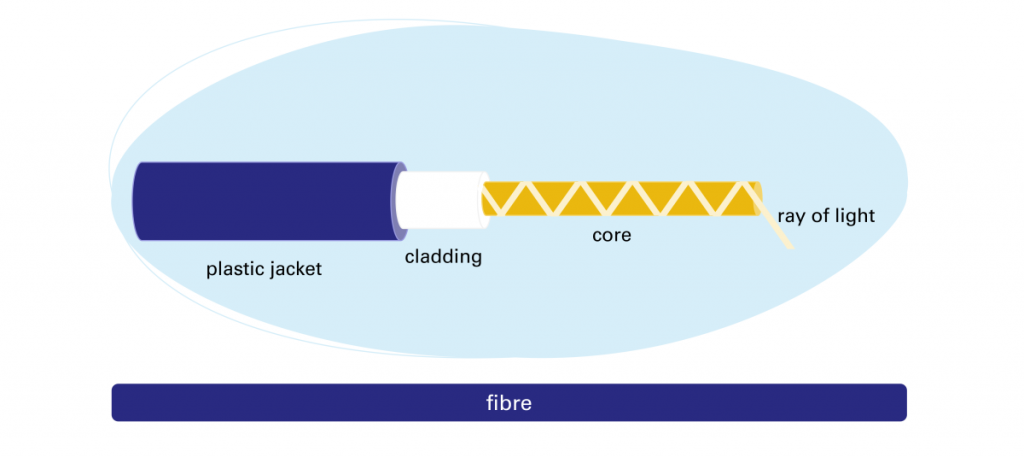
What is optical fibre and how does it work? This page contains a short introduction to this technology.
Read more:
What is optical fibre?
Telecom networks link everything and everyone: people, companies, web servers, sensors and nowadays also home appliances. Those links can be established in various ways: through air waves (such as Wi-Fi, Bluetooth or GSM signals) or by cable. Optical fibre is such a type of cable, whereby information is sent by means of a light signal.
An optical fibre is a very thin glass filament (125 micrometre, about as thin as human hair) with a plastic jacket. Several optical fibres are usually combined to form fibre optic cables, ranging from 2 to over a 1,000 optical fibres per cable.
The information is transmitted digitally, which means that all information is converted into a series of zeroes and ones, the so-called “bits”. In case of optical fibre those bits are transformed into a light pulse: 0 is off and 1 is on for instance. Those light pulses can be transmitted very quickly, so that there is little delay. Because, in addition, a light signal suffers little loss in glass, it can also cross very long distances. An optical signal is also less sensitive to electromagnetic interference.
How does it work?
A laser or a LED feeds a light signal into an optical fibre. An optical fibre consists of a glass core, where the light signal is sent through and which is surrounded by another kind of glass (“cladding”), so that the light signal is reflected and therefore stays in the core. The light signal travels along the optical fibre bouncing back and forth off the boundary between the core and cladding.

At the other end of the optical fibre the light signal is captured by an optical sensor and reconverted into an electric digital signal.
Capacity of an optical fibre
The capacity of an optical fibre depends on the technology used to transmit the signals. Those technologies are constantly updated so that ever-increasing speeds will be possible in the future. The record for the highest speed through an optical fibre now stands at 319 terabits (i.e. 319 million times a million bits) per second.
An important concept here is WDM. WDM stands for Wavelength-Division Multiplexing and means that different signals are transmitted simultaneously with a different wavelength (or light colour) over the same optical fiber. At the other end of the line the separate signals are retrieved by dividing the light signal back into the different light colours. Because not one but several signals are transmitted simultaneously, larger bandwidths are made possible.